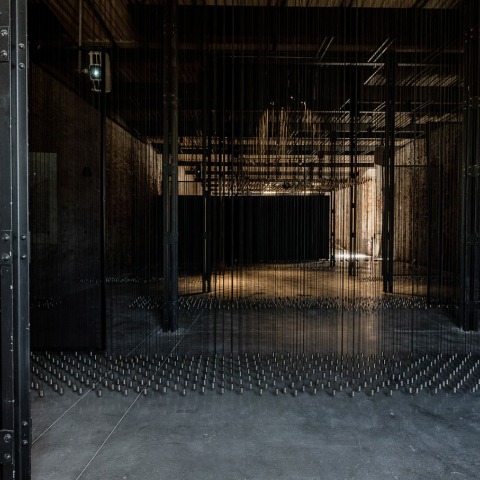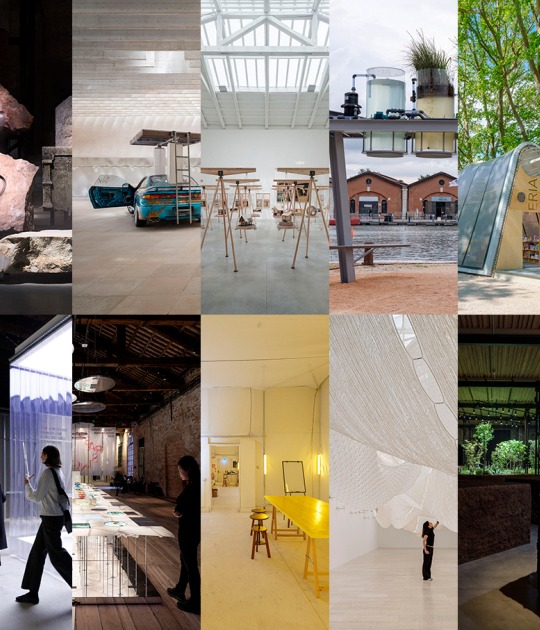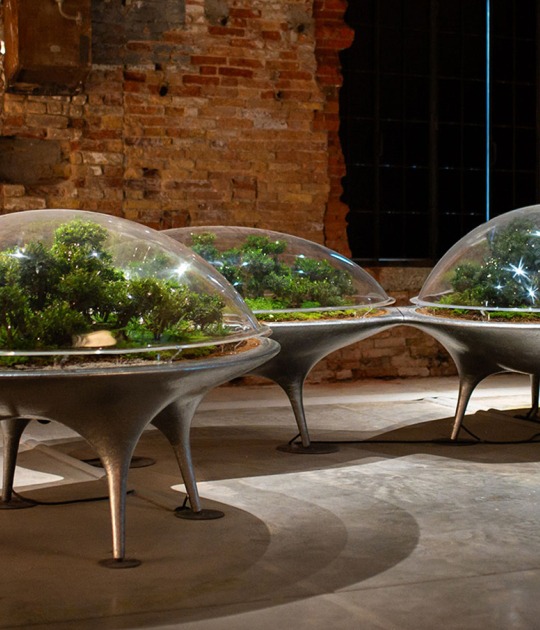These "Displacements", which arise mainly from adverse conditions such as inequalities, violence, environmental deterioration, or risk of natural disasters, are a way of reflecting the local realities and experiences of the Mexican population and promoting equitable, sustainable, and collective environments.
Description of project by Isadora Hastings, Natalia de la Rosa, Mauricio Rocha and Elena Tudela
Mexico participates with the Pavilion "Displacements", in the 17th International Architecture Exhibition of the Venice Biennale, which will take place from May 22 to November 21, 2021.
The Mexican proposal promoted by the Ministry of Culture of the Government of Mexico and the National Institute of Fine Arts and Literature, rethought the way in which Mexico used to participate in this outstanding space where the world meets to talk about architecture, a fundamental field of the heritage and people's lives in cities and countries.
A plural Technical Committee, diverse and with gender equality, reflected on the way to attend to the participation of our country, promoting a polyphonic dialogue that would answer the question of the general curator of the Biennial, How will we live together ?, in correspondence to many others great questions related to migrant societies, which experience highly complex situations that are not limited to a final architectural product, but to the processes of dialogue and social and cultural involvement that surround them.
This Committee formed an inclusive curatorial team, to formulate the collective proposal of the Mexico Pavilion, as part of the transformation of the work scheme of the theme pre-established by the Venice Biennale, to guide a conversation that builds a different message, both in its conceptual foundation, as in the spatial, artistic and constructive manifestation, decided by consensus to integrate a curatorial committee, equally equitable and diverse.
Once a position had been built by the Committee, a public call was launched in which 153 projects from 14 states of our country were registered, of which, a professional and diverse jury, selected 12 proposals that show the world the contribution of contemporary Mexican architecture to exist in the midst of cultural, linguistic and territorial diversity, with opinions, criticisms, practices, stories and different profiles, in response to the aforementioned theme proposed by the general curator of the Biennial. The protagonists of these 12 initiatives joined the collegiate dialogue which is the result of the content and approach of "Displacements"
In this edition, the Pavilion with which Mexico participates, raises the reflection on "displacements", which arise mainly from adverse conditions such as: evident inequalities, environmental deterioration, risk of disasters and various types of violence (economic, social , cultural and gender) linked to specific spaces.
Despite current conditions, and during the pandemic, INBAL praised the importance of maintaining Mexico's presence at the Biennial. This pavilion raises the reflection on “displacements”, which mostly arise from adverse conditions such as the current ones from creative, resilient and hopeful experiences. These transfer processes occur at different scales of time and space that transcend borders and limits, and in their passage through different geographies and territories, they draw pauses, thresholds and changes of course. It points out the implications of design in the "displacements" in different scales of time and space, whether they are promoted, desired, used or avoided, to promote more equitable, fair, sustainable and collective environments.
The most important objective is to explore ways of designing and building spaces for belonging, reconciliation, narration, exchange, recovery, assimilation, forgiveness and resistance derived from “displacements”. He conceives of Mexican architecture as a border expression of socio-environmental systems, to accommodate more diverse and multiple expanded collectivities.
Its design also reflects the conditions of scarcity that characterize our local realities and uses the experience of the role of "displacements" in our architecture so that the visitor to the Mexico Pavilion travels and discovers their own sensory experience from their vision.




































